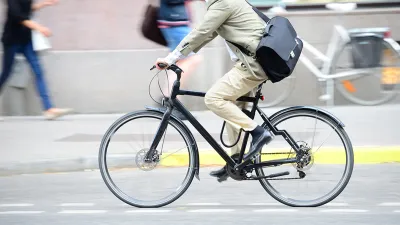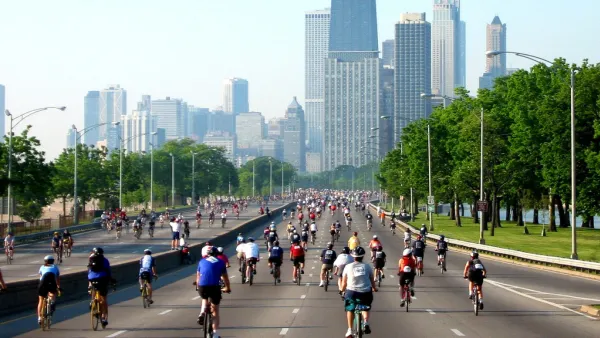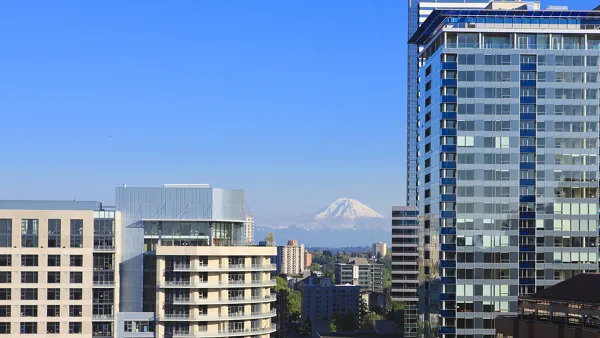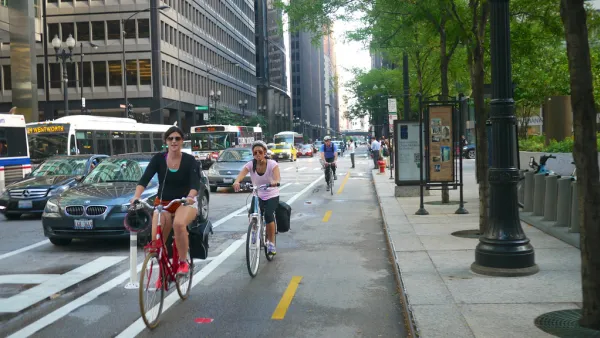Many U.S. cities are seeing an increase in bicycle commuters, according to a U.S. Census Bureau report released last week. Of all commute modes, biking increased the most from 2000 to 2012. Walking, however, held steady.

"Nationwide, the number of people who traveled to work by bike increased roughly 60 percent over the last decade, from about 488,000 in 2000 to about 786,000 during the 2008-2012 period. This is the largest percentage increase of all commuting modes tracked by the 2000 Census and the 2008-2012 American Community Survey," according to a press release announcing the United States Census Bureau's new report, titled "Modes Less Traveled—Bicycling and Walking to Work in the United States: 2008–2012."
Moreover, "[while] bicyclists still account for just 0.6 percent of all commuters, some of the nation's largest cities have more than doubled their rates since 2000. Portland, Ore., had the highest bicycle-commuting rate at 6.1 percent, up from 1.8 percent in 2000. In Minneapolis, the rate increased from 1.9 percent to 4.1 percent."
The results for walking, however, held steady: "After steadily decreasing since 1980, the percent of people who walk to work has stabilized since 2000. In 1980, 5.6 percent of workers walked to work, and that rate declined to 2.9 percent by 2000. However, in the 2008-2012 period, the rate of walkers remained statistically unchanged from 2000."
On the same day as the study, the Census also released a new commuting edition of the interactive map Census Explorer. Planetizen blogger Michael Lewyn already crunched that data about average commute times in cities and suburbs around the country.
Michael Stenzel has also analyzed some of the data in the report, especially with regard to the growing rate of walking and biking to work in Chicago: "In Chicago in 2000, 5.7% of workers walked to work, but by 2012, the percent had increased to 6.4%," and "in 2000, only half a percent of Chicagoans rode their bikes to work, but by 2012, it was 1.3%."
FULL STORY: Biking to Work Increases 60 Percent Over Last Decade, Census Bureau Reports

Analysis: Cybertruck Fatality Rate Far Exceeds That of Ford Pinto
The Tesla Cybertruck was recalled seven times last year.

National Parks Layoffs Will Cause Communities to Lose Billions
Thousands of essential park workers were laid off this week, just before the busy spring break season.

Retro-silient?: America’s First “Eco-burb,” The Woodlands Turns 50
A master-planned community north of Houston offers lessons on green infrastructure and resilient design, but falls short of its founder’s lofty affordability and walkability goals.

Test News Post 1
This is a summary

Analysis: Cybertruck Fatality Rate Far Exceeds That of Ford Pinto
The Tesla Cybertruck was recalled seven times last year.

Test News Headline 46
Test for the image on the front page.
Urban Design for Planners 1: Software Tools
This six-course series explores essential urban design concepts using open source software and equips planners with the tools they need to participate fully in the urban design process.
Planning for Universal Design
Learn the tools for implementing Universal Design in planning regulations.
EMC Planning Group, Inc.
Planetizen
Planetizen
Mpact (formerly Rail~Volution)
Great Falls Development Authority, Inc.
HUDs Office of Policy Development and Research
NYU Wagner Graduate School of Public Service




























